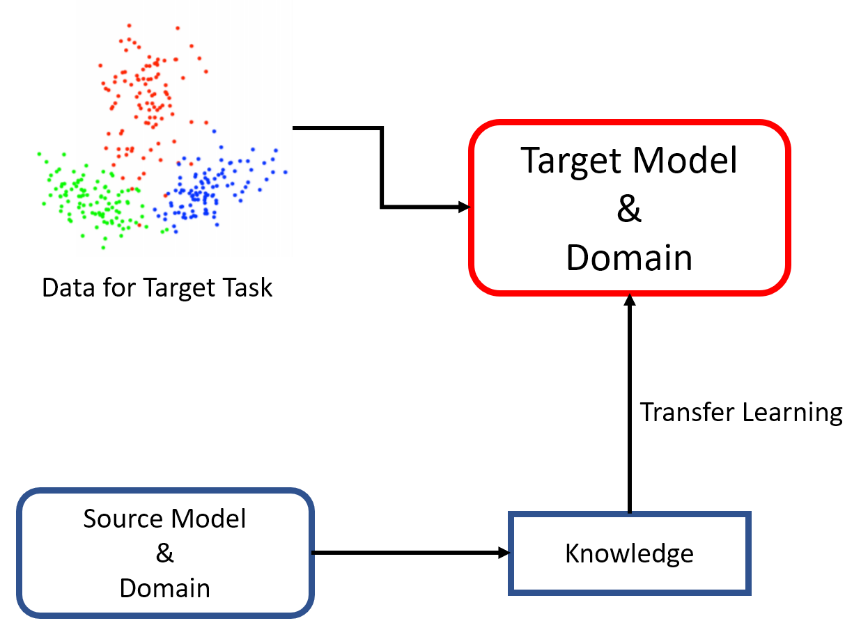Traditionally, learning algorithms are designed to tackle tasks or problems in isolation. Depending upon the requirements of the use case and data at hand, an algorithm is applied to train a model for the given specific task. Traditional machine learning (ML) trains every model in isolation based on the specific domain, data and task as depicted in the following figure:

Transfer learning takes the process of learning one step further and more inline with how humans utilize knowledge across tasks. Thus, transfer learning is a method of reusing a model or knowledge for another related task. Transfer learning is sometimes also considered as an extension of existing ML algorithms. Extensive research and work is being done in the context of transfer learning and on understanding how knowledge can be transferred among tasks. However, the Neural Information Processing Systems (NIPS) 1995 workshop Learning to Learn: Knowledge Consolidation and Transfer in Inductive Systems is believed to have provided the initial motivations for research in this field.
Since then, terms such as Learning to Learn, Knowledge Consolidation, and Inductive Transfer have been used interchangeably with transfer learning. Invariably, different researchers and academic texts provide definitions from different contexts. In their book, Deep Learning, Goodfellow et al. refer to transfer learning in the context of generalization. Their definition is as follows:
Situation where what has been learned in one setting is exploited to improve generalization in another setting.
Let's understand the preceding definition with the help of an example. Let's assume our task is to identify objects in images within a restricted domain of a restaurant. Let's mark this task in its defined scope as T1. Given the dataset for this task, we train a model and tune it to perform well (generalize) on unseen data points from the same domain (restaurant). Traditional supervised ML algorithms break down when we do not have sufficient training examples for the required tasks in given domains. Suppose we now must detect objects from images in a park or a café (say, task T2). Ideally, we should be able to apply the model trained for T1, but in reality we face performance degradation and models that do not generalize well. This happens for a variety of reasons, which we can liberally and collectively term as the model's bias toward training data and domain. Transfer learning thus enables us to utilize knowledge from previously learned tasks and apply them to newer, related ones. If we have significantly more data for task T1, we may utilize its learnings and generalize them for task T2 (which has significantly less data). In the case of image classification, certain low-level features, such as edges, shapes, and lighting, can be shared across tasks and thus enable knowledge transfer among tasks.
The following diagram shows how transfer learning enables reusing existing knowledge for new related tasks:

As shown in the preceding diagram, knowledge from an existing task acts as an additional input when learning a target task.
